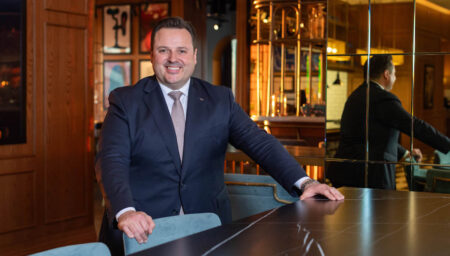The Sleeping Beauty is Tchaikovsky’s first ballet score and some would say his greatest. Ballet audiences, whether they be children or adults, are familiar with this ballet and know every tune.For the few that are not familiar with the story of the ballet (as opposed to the Disney film), the synopsis is as follows:
We are firstly transported to the palace of King Florestan XIV where the wedding of his daughter, Princess Aurora, is being celebrated. The Lilac Fairy and Good Fairies appear and bring their gifts. Suddenly the evil Carabosse Fairy arrives. She predicts that Aurora will die from pricking her finger with a knitting spindle, however the Lilac Fairy intervenes.
Time passes and it is Princess Aurora’s sixteenth birthday. An old woman with a knitting spindle appears. Trustful Aurora takes it and accidentally pricks her finger and falls to the ground. The Lilac Fairy then appears and mitigates the evil spell. Aurora is not dead — she has fallen asleep. She will be brought back to life by the kiss of a handsome Prince.
While Prince Florimund is hunting, the Lilac Fairy appears to him and summons up a vision of Aurora. Florimund implores the Lilac Fairy to search for the beautiful maiden. She then invites the Prince to sail in her magic craft to the bewitched castle.
As the Lilac Fairy and Prince Florimund approach the castle, she tries to conceal Aurora but, in vain, the Prince catches sight of the sleeping beauty. The Prince tenderly kisses the Princess and the evil spell is broken! Carabosse and her suite vanish. Aurora wakes up and the royal kingdom comes to life. Florimund asks the King and Queen for their daughter’s hand in marriage.
Fairytale characters come to Aurora and Florimund’s wedding. The Prince and Princess dance in a harmonious and solemn duet. The Lilac Fairy and her suite bless the happy couple.
This ballet is a test of endurance for the whole cast. The corps de ballet have to assume multiple parts and the principal work is the most demanding of the classical ballet repertoire.
The Sleeping Beauty depends on four characters: Princess Aurora, Prince Florimund, Carabosse Fairy and the Lilac Fairy.
The Lilac Fairy is the story teller and guide, and Claire Calvert more than fulfils this role. Her point work as the curtain went down at the end of the hunting scene was memorable.
The role of Carabosse, though not a dance role, demands the knowledge of dance, mime and acting. Kristen McNally’s performance was strikingly aided by a clever exit down a stage trapdoor accompanied with smoke; a dramatic effect that drew gasps from the audience.
Prince Florimund does not appear until half way through the ballet, however more than makes up for this, particularly in the famous pas de deux near the end of the ballet. Vadim Muntagirov’s commanding presence combined with faultless technique both in his pas de seul and partnering of Aurora was technically outstanding. He combined masculinity with lightness in his jetes.
The shining light of The Sleeping Beauty is, of course, Princess Aurora, brilliantly danced by Marianela Nuñez. She made the impossible look effortless and spent most of her performance on pointe. In fact, there was a plethora of pointe work in the whole female cast. She was a joy to watch!
Add to these dancers, sumptuous costumes, sets and a wonderful orchestra and you have a ballet that was faultless!
A great ballet to take young aspiring dancers to, but on a sour note, do not let them eat potato crisps during the quiet moments of the ballet (or any moments for that matter)!
Reviewed by Barry Hill
Twitter: @kinesguy
Rating out of 10: 10
The Sleeping Beauty will screen again on 12 April 2017 as part of the Palace Opera & Ballet cinema season, presenting The Royal Opera House, La Scala and Opéra national de Paris – exclusive to the Palace Nova Eastend cinemas.























